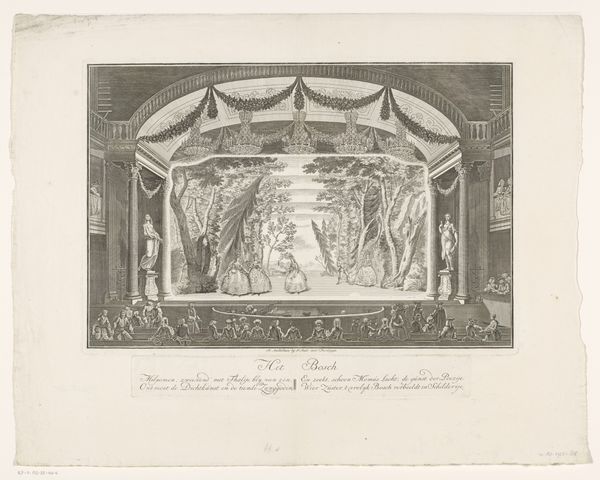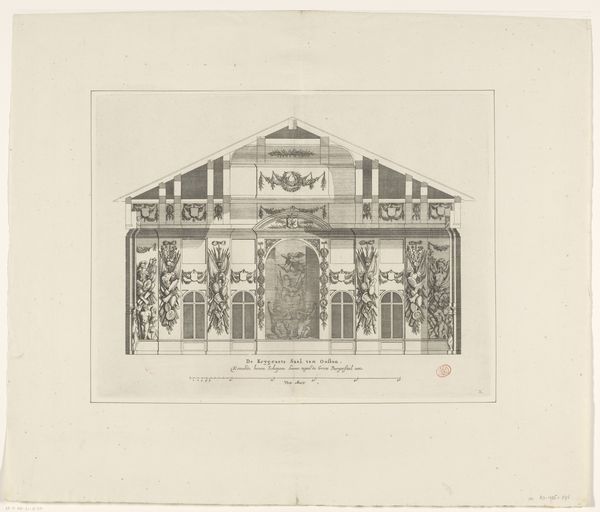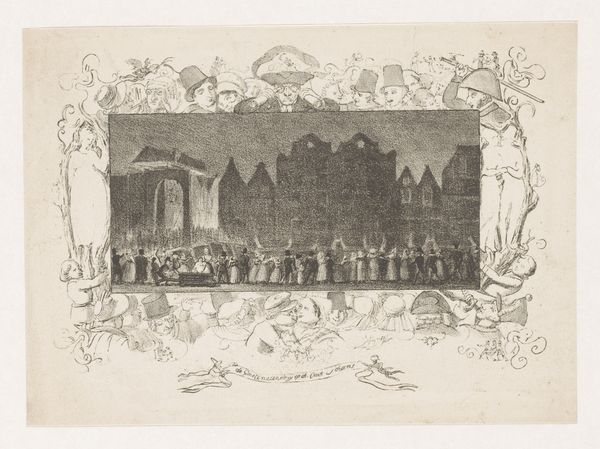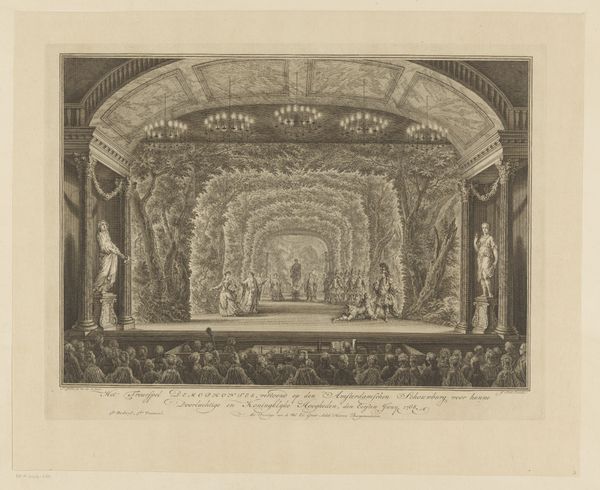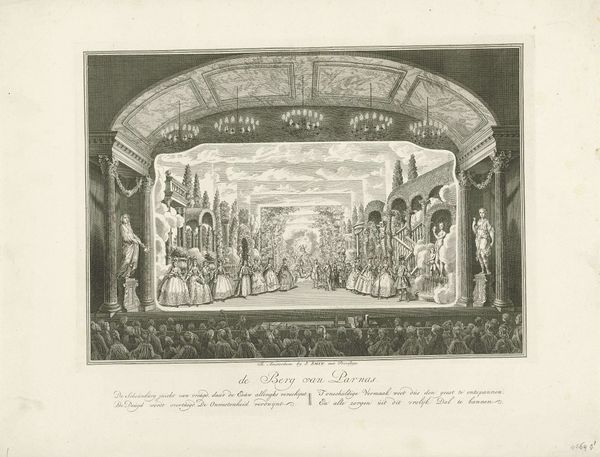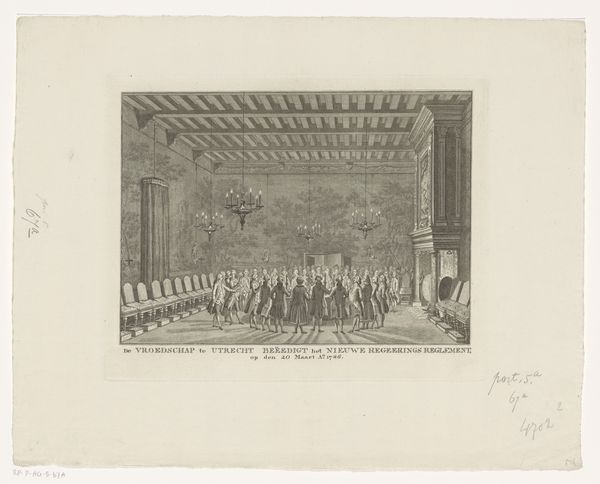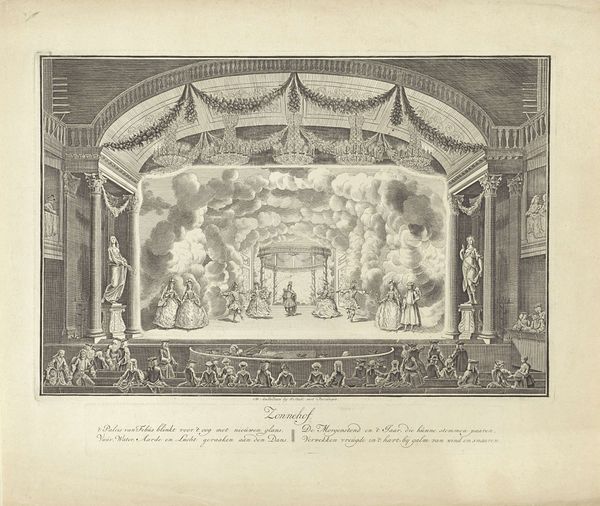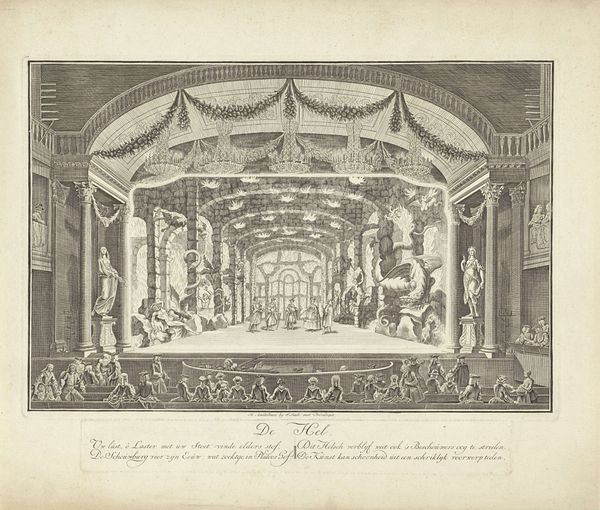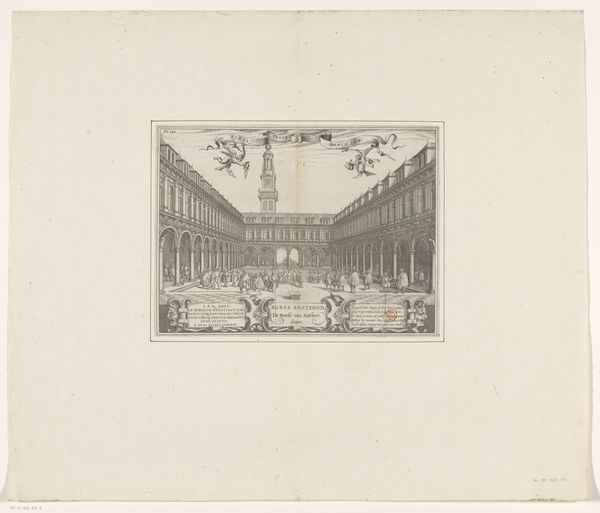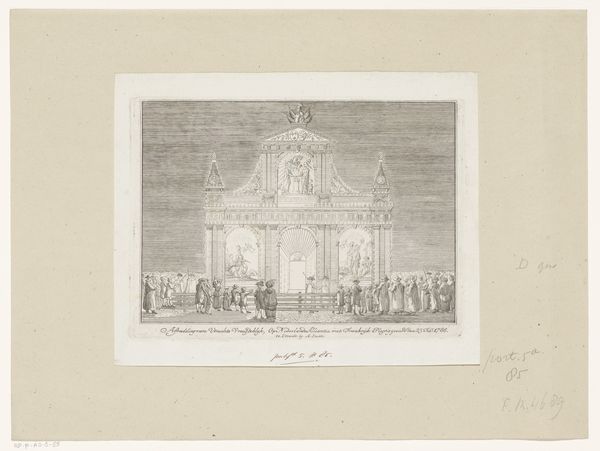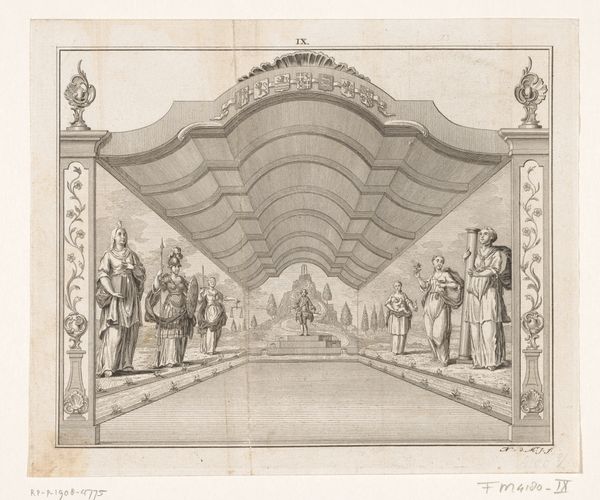
print, engraving
#
narrative-art
#
baroque
# print
#
old engraving style
#
perspective
#
figuration
#
cityscape
#
history-painting
#
engraving
Dimensions: height 350 mm, width 452 mm, height 304 mm, width 452 mm, height 145 mm, width 270 mm, height 40 mm, width 360 mm
Copyright: Rijks Museum: Open Domain
Curator: Ah, this print, "Schouwburg met toneeldecor: De Berg van Parnas," possibly created between 1738 and 1765 by Jan Punt. It's currently held at the Rijksmuseum, and the engraving captures a theatrical scene. Editor: It's remarkably stiff. Almost oppressively formal. But then I realize—it's *meant* to be stiff, it’s theatre. Still, all those powdered wigs! Curator: Absolutely. The artwork is particularly compelling when you consider how theatre served as a site for social and political critique, especially within the context of burgeoning Enlightenment ideals. Theatre was an interesting location, frequently staging veiled critiques of power and privilege. This piece offers a window into that world, quite literally! Editor: So you're saying all the prim and powdered figures are potentially part of an elaborate performance of social critique, hidden in plain sight? Curator: Precisely. Look at the way perspective is used; the eye is drawn deep into the scene, almost forcing one to penetrate beyond the surface, to see what lurks behind. In terms of symbolism, think about the staging, itself! What statement is made? Editor: The idea of 'Parnassus' – this mountain of artistic and intellectual enlightenment - presented on a literal stage is a fascinating thing. Almost as if Jan Punt wanted us to look at not only the performance but, in the words of French sociologist, Pierre Bourdieu, the ‘cultural capital’ which enabled such spectacle. I suppose what seems ‘stiff’ and inaccessible may instead be about exclusion as part of the aesthetic experience. Who gets access to the arts? Who doesn’t? Curator: Such a thoughtful and vital question. It transforms the whole composition. Looking closely at the details within, you can see the rigid posture of individuals reflecting the limitations of the time... even the rigid constraints put on the imagination. Editor: Perhaps the brilliance of art like this lies in its invitation to both acknowledge historical realities, while also considering questions of artistic purpose: for whom? By whom? Curator: Indeed. We are constantly asking "Who's on stage, and who's in the audience?" Editor: Absolutely! I am reminded of some lines from feminist theorist, Gayatri Spivak... “the subaltern cannot speak,” and here perhaps, it’s worth trying to tune one's ear a little closer to hear whom art actually serves, even now.
Comments
No comments
Be the first to comment and join the conversation on the ultimate creative platform.
